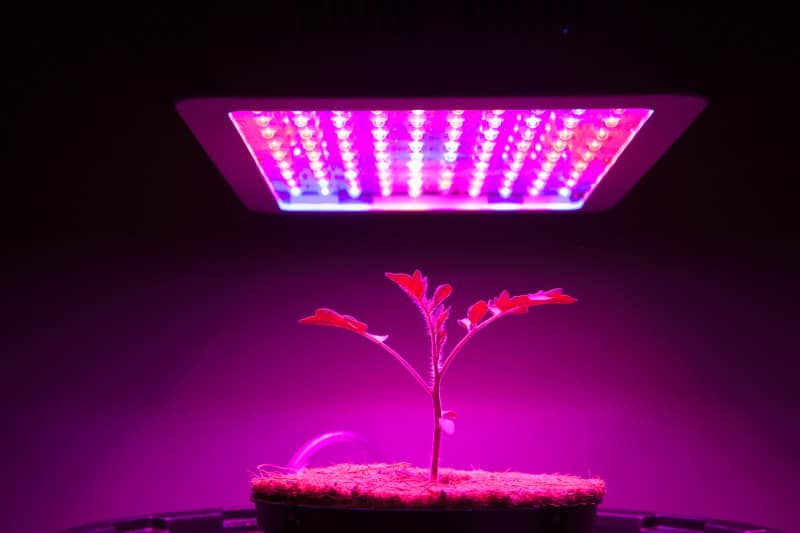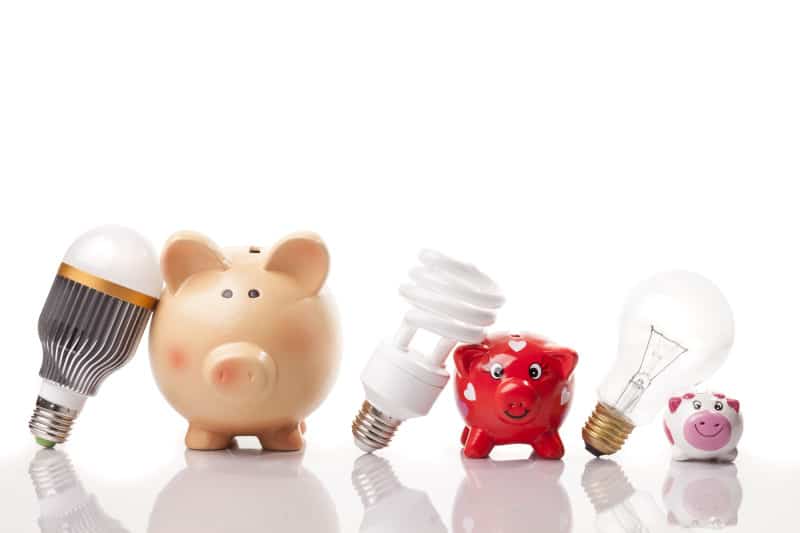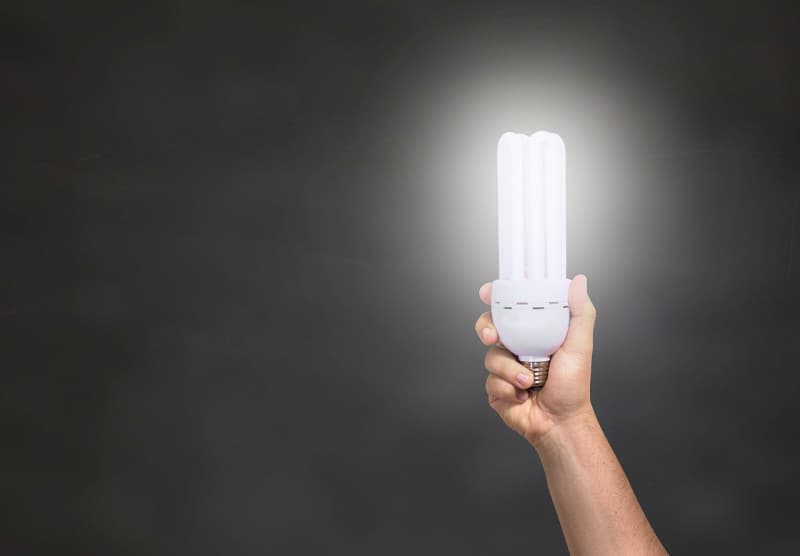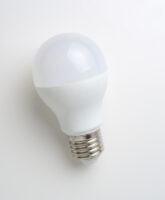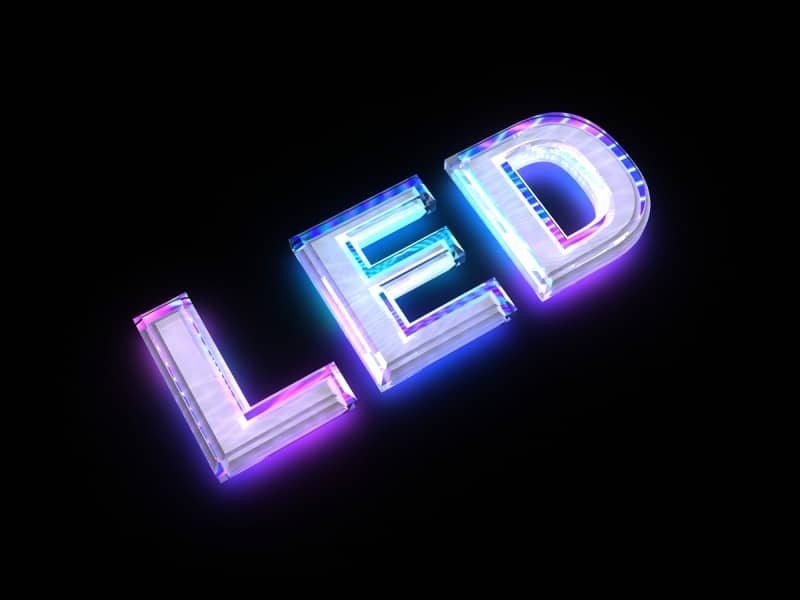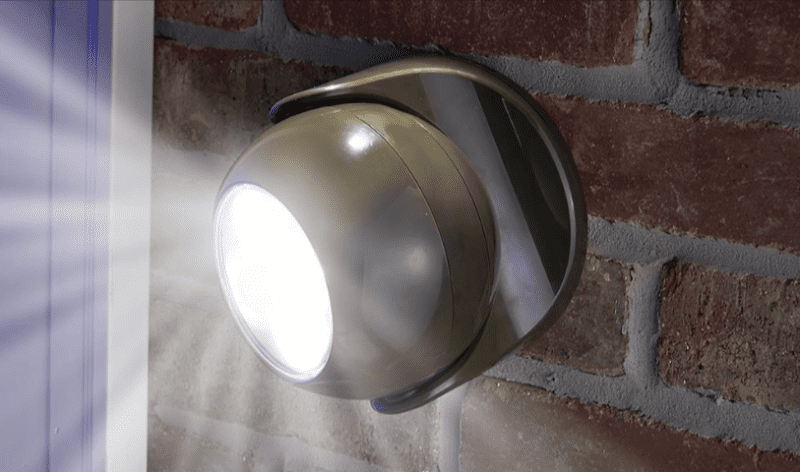Are you tired of watching your indoor plants struggle to survive?
It’s time to take action and provide them with the right tools for optimal growth.
LED grow lights are the perfect solution to boost your plant’s health and vitality.
Like a ray of sunshine on a rainy day, LED grow lights provide the necessary light spectrum to simulate the sun’s natural light.
This means that your plants will receive the right amount of light, allowing photosynthesis to occur, leading to healthy growth and development.
With LED grow lights, you can control the light intensity, duration, and spectrum, providing your plants with the perfect environment for growth.
But with so many options on the market, it can be overwhelming to choose the right LED grow light for your indoor plants.
I will guide you through the benefits of LED grow lights, how to choose the right one, and how to optimize your indoor plant growth with LED grow lights.
Get ready to dive into the world of LED grow lights and take your indoor plant game to the next level.
Benefits of LED Grow Lights for Indoor Plants
LED grow lights are becoming increasingly popular because they offer many advantages over other lighting options.
For one, they’re more energy-efficient and produce less heat, which means you can save on electricity bills and avoid damaging your plants.
LED grow lights can enhance plant growth and development by providing the right spectrum of light that plants need for photosynthesis.
Why are people interested in using LED grow lights for indoor plants?
Many plant enthusiasts are drawn to using LED grow lights for their indoor plants because they provide a cost-effective and energy-efficient solution to replicate natural sunlight.
Here are four reasons why people are interested in using LED grow lights for their indoor plants:
- LED grow lights are designed to emit a specific spectrum of light that is optimized for plant growth. This means that plants receive the exact wavelengths of light they need to thrive, without wasting energy on light that isn’t beneficial to their growth.
- LED grow lights are highly efficient, using up to 50% less energy than traditional grow lights. This not only saves money on electricity bills but also reduces the carbon footprint of indoor gardening.
- LED grow lights produce very little heat, which means they can be placed closer to plants without risking damage from overheating. This allows for more precise control over the amount of light plants receive, which can lead to faster growth and higher yields.
- LED grow lights are long-lasting and require very little maintenance, making them a convenient and reliable choice for indoor gardening. With proper care, LED grow lights can last for years, providing consistent and reliable light for healthy plant growth.
What advantages do LED grow lights offer compared to other lighting options?
Compared to traditional lighting options, LED grow lights offer higher energy efficiency, light intensity, and longer lifespan.
These efficiency benefits translate to reduced electricity bills and less frequent replacement, making LED grow lights a cost-effective option for indoor plant growers.
In addition to the efficiency benefits, LED grow lights also produce less heat, reducing the risk of plant damage due to overheating.
This durability factor ensures that the plants receive a consistent amount of light without any negative environmental impact.
Therefore, LED grow lights are an excellent choice for indoor plant growers seeking a sustainable and eco-friendly lighting option.
How can LED grow lights enhance plant growth and development?
Enhancing plant growth and development, LED lights provide a spectrum of light wavelengths that can be tailored to meet the specific needs of different plant species.
For instance, blue wavelengths promote vegetative growth while red wavelengths encourage flowering and fruiting.
The ability to manipulate the light spectrum allows growers to fine-tune the growth rate, photosynthesis efficiency, and plant morphology.
Here are a few ways LED grow lights can enhance plant growth and development:
- Increased yields: LED lights with a specific blue-to-red light ratio have been found to increase lettuce yield by 27% compared to traditional lighting sources.
- Faster growth: LED lights can provide light that’s more intense than natural sunlight, stimulating plant growth and leading to faster crop cycles.
- Better plant quality: By providing a customized light spectrum, LED grow lights can improve the overall quality of plants, including color, aroma, and flavor.
Choosing the Right LED Grow Lights for Your Indoor Plants
When selecting LED grow lights for your indoor plants, you should consider multiple factors. These factors include the light’s wattage, spectrum, and coverage area.
The market offers various types of LED grow lights, including full-spectrum, white, and red-blue.
The wattage and spectrum of the light can significantly impact your plant’s growth and health.
Therefore, it is important to choose the right type of light for your specific plants.
The coverage area of the light source is also an important consideration.
Taking the time to research and choose the right LED grow lights can make a significant difference in the health and growth of your indoor plants.
What factors should be considered when selecting LED grow lights?
To choose the best LED grow lights for your indoor plants, you’ll need to consider several factors.
First, evaluate the light spectrum of the LED grow lights.
Plants require different wavelengths of light for various stages of growth, so it’s essential to choose lights that can provide the right spectrum.
Full-spectrum LED grow lights are the best option as they can provide a broad range of light wavelengths, from red to blue to white, and can support all stages of plant growth.
Next, consider the wattage needs of your plants.
Different plants require varying levels of light intensity, and it’s crucial to choose LED grow lights that can provide the required wattage.
Keep in mind that higher wattage doesn’t always mean better results.
You also need to factor in brand reliability and budget constraints while selecting LED grow lights for your indoor plants.
Ensure that the LED grow lights are compatible with the type of plant you are growing to ensure optimal growth and yield.
What are the different types of LED grow lights available in the market?
If you’re looking for options, did you know there are different types of LED grow lights available in the market?
The most common types are full spectrum, red and blue, and white LED lights.
Full spectrum lights are designed to mimic natural sunlight and provide a complete range of wavelengths needed for plant growth.
Red and blue LED lights, on the other hand, are designed to simulate the two most important wavelengths for photosynthesis.
White LED lights are a combination of both full spectrum and red and blue LED lights, making them a versatile option for different stages of plant growth.
When choosing LED grow lights, it’s important to consider their features, brands, and pricing.
Some popular brands include Mars Hydro, Viparspectra, and Spider Farmer, all of which have great reviews and offer different types of LED grow lights at varying price points.
Before making a purchase, it’s important to read reviews and do research to ensure that the LED grow lights you choose meet the specific needs of your plants.
With the right type of LED grow lights, you can provide your indoor plants with the optimal conditions for healthy growth and a bountiful harvest.
How do wattage, spectrum, and coverage area impact plant growth?
Now that you know the different types of LED grow lights available in the market, it’s time to understand how wattage, spectrum, and coverage area impact plant growth.
When it comes to wattage versus spectrum, it’s important to note that higher wattage doesn’t always mean better plant growth.
A higher wattage LED grow light may consume more power and produce more heat, which can negatively impact plant health.
Instead, focus on finding the right balance between wattage and spectrum for your specific plants.
Light penetration is another crucial factor to consider when choosing LED grow lights.
Plants require different types of light at different stages of growth, and different wavelengths penetrate plant tissue at varying depths.
Red and blue light are the most important for plant growth, as they correspond to the peaks of the plant response curve.
Therefore, it’s important to find a LED grow light that balances the red and blue spectrum for optimal plant growth.
Consider the efficiency versus cost of the LED grow light. While you may be tempted to choose a cheaper option, it’s important to consider the long-term costs of running the light.
A more efficient LED grow light may cost more upfront, but it will save you money in energy costs over time.
Remember to also consider the coverage area of the LED grow light, as too small of a coverage area can lead to uneven plant growth.
By taking all of these factors into consideration, you can choose the best LED grow light for your indoor plants.
Optimizing Indoor Plant Growth with LED Grow Lights
To optimize indoor plant growth with LED grow lights, you must consider the placement and positioning of the lights.
Proper placement ensures that your plants get uniform light coverage, which is essential for healthy growth.
You should also follow recommended light cycles and intensity levels for different stages of plant growth to ensure that your plants get the right amount of light they need at the right time.
Specific plant species or varieties may require special considerations, such as adjusting the light spectrum or intensity, to achieve optimal growth and yield.
How can the placement and positioning of LED grow lights affect plant growth?
Proper placement and positioning of LED grow lights can significantly impact the growth and development of indoor plants.
When it comes to placement tips, it’s essential to consider the light distance, angle, height adjustment, and direction.
The light distance should be adjusted according to the needs of the specific plant species.
Too far away, and the light may not provide enough energy for photosynthesis.
Conversely, if the light is too close, it can damage the leaves and cause them to wilt or burn.
The light angle should be set correctly to ensure even distribution of light across the entire plant.
This can be achieved by tilting the light source slightly towards the plant or using multiple lights to cover different areas.
The height adjustment should be made to accommodate the growth of the plant.
As the plant grows taller, the light source should be moved higher to maintain an appropriate distance.
The light direction should be adjusted to provide adequate light to all sides of the plant.
This can be achieved by rotating the plant or using reflective surfaces to redirect the light.
By following these placement tips, you can maximize the benefits of LED grow lights and promote healthy growth for your indoor plants.
The placement and positioning of LED grow lights play a vital role in the overall growth and development of indoor plants.
With proper placement, you can ensure that your plants receive adequate light to thrive.
By considering light distance, angle, height adjustment, and direction, you can create an optimal environment for your plants to grow and flourish.
Remember to adjust the lights as the plant grows taller and to monitor the plant’s response to the light source.
With the right placement and positioning, you can enjoy healthy, vibrant indoor plants all year round.
What are the recommended light cycles and intensity levels for different stages of plant growth?
Finding the right rhythm for your plants is key – from seedling to harvest, it’s important to know the recommended light cycles and intensity levels for each stage of growth.
Light duration and spectrum are crucial factors that affect plant growth.
For seedlings, a 16-18 hour light cycle with a blue spectrum light is recommended to promote strong root and stem development.
As the plants enter the vegetative stage, the light cycle can be reduced to 12-14 hours and a combination of blue and red spectrum lights can be used to encourage leaf and branch growth.
During the flowering stage, a 12-hour light cycle with a red spectrum light is ideal for promoting bud growth.
It’s important to note that plants have a natural photoperiodism response, meaning they respond to changes in light duration and intensity.
Sudden changes in light cycles or intensity can shock the plant and lead to stunted growth.
It’s recommended to gradually adjust the light cycles and intensity over a period of several days to avoid causing stress to the plant.
By carefully monitoring and adjusting the light cycles and intensity throughout each stage of growth, you can ensure healthy plant growth and maximize your yield.
Are there any special considerations for specific plant species or varieties?
It’s worth noting that different plant species or varieties may have unique lighting requirements that should be taken into consideration for optimal growth.
When selecting LED grow lights for indoor plants, it’s important to research the specific needs of your plants to ensure they receive the appropriate light spectrum, intensity levels, and duration.
Here are some plant-specific considerations to keep in mind:
- Leafy greens such as spinach and lettuce require more blue light for vegetative growth.
- Fruit-bearing plants such as tomatoes and peppers need more red light to stimulate flowering and fruit production.
- Herbs like basil and mint thrive with a balanced spectrum of red and blue light.
- Succulents and cacti prefer brighter light intensity but less duration.
- Orchids require lower light intensity and higher humidity levels to mimic their natural habitat.
By understanding the unique lighting needs of your plants, you can create an environment that promotes healthy growth and maximizes yields.
In addition to light spectrum, it’s also important to consider growth stages, nutrient requirements, and humidity levels when selecting LED grow lights.
With the right equipment and growing methods, you can cultivate a thriving indoor garden that produces bountiful crops year-round.
Maximizing Energy Efficiency and Cost Savings with LED Grow Lights
To maximize energy efficiency and cost savings, you may be wondering how LED grow lights compare to traditional lighting methods in terms of energy consumption.
LED grow lights use less energy and produce less heat than traditional lighting methods, resulting in significant energy savings.
LED grow lights can help reduce overall costs for indoor gardening by providing a more efficient and long-lasting lighting solution.
To further maximize energy savings, consider implementing additional techniques such as using light timers and adjusting the distance between the plants and the LED grow lights.
How do LED grow lights compare to traditional lighting methods in terms of energy consumption?
LED grow lights are a more efficient choice for indoor plant growth than traditional lighting methods, saving you both money and energy. Here are some reasons why:
- LED grow lights have a lower power consumption compared to traditional lighting methods, meaning they use less energy to produce the same amount of light. This translates to lower electricity bills and a reduced environmental impact, making them a more sustainable choice.
- LED grow lights are more efficient in converting electricity into light, resulting in less heat production. This is important because excessive heat can damage plants and reduce their growth. By using LED grow lights, you can maintain an optimal temperature for your plants while also reducing the need for air conditioning.
In addition to these benefits, LED grow lights also have a longer lifespan compared to traditional lighting methods, reducing the need for frequent replacements and saving you money in the long run.
With their energy efficiency, cost savings, and sustainability measures, LED grow lights are an excellent option for indoor plant growth.
Can LED grow lights help reduce overall costs for indoor gardening?
You can lower your expenses for cultivating your indoor garden by using LED grow lights.
These energy-efficient bulbs emit a spectrum of bright light that nurtures your greenery while reducing energy consumption.
Compared to traditional lighting methods, LED grow lights use less power, emit less heat, and last longer.
As a result, they can help you save on electricity bills and reduce your carbon footprint.
However, choosing the right LED grow light can be challenging.
Factors such as light intensity, color spectrum, and coverage area must be considered to ensure optimal plant health and growth.
You should also factor in the upfront cost of the equipment and the long-term savings from reduced energy consumption.
By conducting a cost analysis and evaluating different growing methods and equipment, you can find the LED grow light that’s best suited for your indoor gardening needs.
LED grow lights offer an energy-efficient and cost-effective solution for indoor gardening that can enhance plant health and growth rates.
Are there any additional energy-saving techniques or tips for using LED grow lights effectively?
You’ve already learned that LED grow lights are a cost-effective solution for indoor gardening, but did you know that there are additional energy-saving techniques you can use to maximize their efficiency?
One of the most important factors to consider is timer usage.
By setting your LED grow lights to turn on and off at specific times, you can ensure that your plants receive the right amount of light without wasting energy.
Another key technique is height adjustment.
LED grow lights are designed to emit light in a specific direction, so you’ll need to adjust their height relative to your plants to ensure that they receive uniform coverage.
Using reflective surfaces can help to redirect light back onto your plants, further reducing energy waste.
Temperature control and humidity management are also important factors to consider, as they can affect both plant growth and energy usage.
Troubleshooting and Maintenance of LED Grow Lights
If you’re using LED grow lights for your indoor plants, you may encounter some common issues or challenges.
You may notice that some plants aren’t growing as well as others or that certain parts of the plants aren’t receiving enough light.
To troubleshoot these problems, you’ll need to carefully evaluate the placement and intensity of your lights, as well as the overall health of your plants.
Regular maintenance practices, such as cleaning your lights and checking for any signs of wear or damage, can also help ensure optimal performance and longevity.
What are common issues or challenges that may arise when using LED grow lights?
When using LED grow lights for your indoor plants, it’s important to be aware of the potential drawbacks that may arise.
One of the most common issues is managing the heat that LED grow lights produce.
These lights produce a lot of heat, which can cause damage to your plants if not managed properly.
You may need to install a cooling system or adjust the distance between the lights and the plants to prevent them from overheating.
Another challenge when using LED grow lights is controlling the light intensity and color spectrum.
Different plants require different amounts of light and specific wavelengths to grow properly.
If the intensity or spectrum of the light is not appropriate for your plants, they may not grow as well as they could, or they may even start to wilt.
It’s crucial to understand the specific needs of your plants and to adjust the light settings accordingly to ensure optimal growth.
How can users troubleshoot problems with LED grow lights?
Now that you know about the common issues and challenges that may arise when using LED grow lights, let’s talk about how you can troubleshoot these problems.
Some of the issues you may encounter include light flickering, overheating, dimming issues, malfunctioning drivers, and inconsistent light output.
These can be frustrating to deal with, but there are some simple steps you can take to resolve them.
First, check the connections between your LED grow light and the power source.
Make sure everything is securely connected and that there are no loose or damaged wires.
If the problem persists, try replacing the power source or the driver.
If your LED grow light is still malfunctioning, it may be time to contact the manufacturer or seek professional help to diagnose and fix the issue.
Remember, consistent and reliable light output is crucial for healthy plant growth, so it’s important to address any problems as soon as possible.
What regular maintenance practices should be followed to ensure optimal performance and longevity of LED grow lights?
To ensure your investment lasts and your plants thrive, it’s important to regularly maintain your LED grow light.
This includes cleaning the lenses, checking for dust build-up, and replacing any damaged parts.
When cleaning the lenses, use a soft cloth and a gentle cleaner to avoid scratching or damaging the surface.
Pay close attention to the corners and crevices of the light, as these can often accumulate dust and dirt.
In addition to cleaning, temperature control and humidity management are crucial for optimal plant growth.
Make sure your grow room is well-ventilated and maintained at a consistent temperature to avoid fluctuations that can stress your plants.
Proper timer settings and voltage regulation are also important to ensure your LED grow light is functioning at its best.
Regularly checking and adjusting these settings will help maintain the health and longevity of your plants and your LED grow light.
Conclusion
By investing in these powerful and efficient lights, you’re ensuring that your plants receive the optimal light spectrum for photosynthesis and growth.
As you continue to use your LED grow lights, be sure to monitor your plants closely and make any necessary adjustments to their placement or light exposure.
With proper care and attention, your indoor plants will thrive and bloom under the gentle glow of LED grow lights.
So go ahead, bask in the satisfaction of a green thumb, knowing that you’re providing the best possible environment for your beloved plants to flourish.

